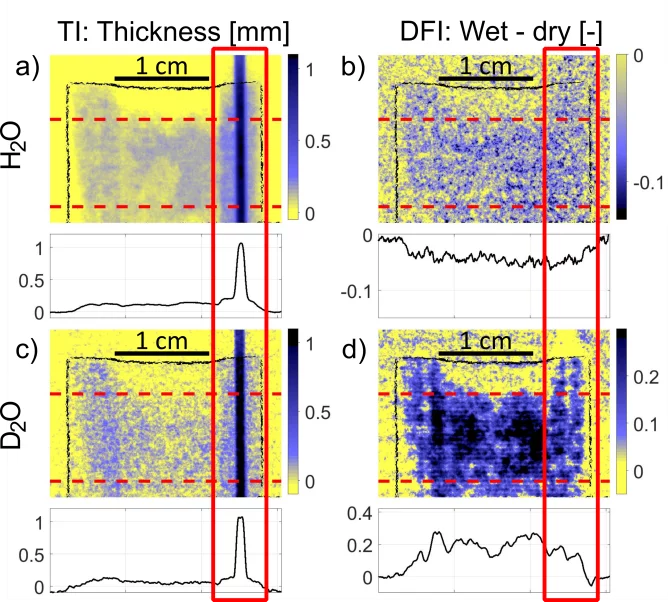Neutron dark-field imaging
Liquid water accumulated in the gas diffusion layers (GDL) can lead to reduced performance due to mass transport losses. Neutron dark-field imaging offers new possibilities to visualize water in the GDL, as this technique is selectively sensitive to microstructures. The dark-field image (DFI) is obtained simultaneously to the conventional transmission image (TI) when a neutron grating interferometer is placed in the beam.
A sample that contains microstructures in the size range from one to several tens of micrometers and with scattering length densities different from their surroundings causes neutron scattering to ultra-small angles. Dark-field imaging captures - in contrast to traditional ultra-small angle neutron scattering (USANS) - the scattering information in a spatially resolved way.
Because large homogenous structures, which are for example present in flow field channels of fuel cells, do not cause coherent neutron scattering to ultra-small angles they do not significantly influence the DFI value. Therefore, this technique enables the selective visualization of water in the GDL without disturbing signal of overlapping water present in channels (Figure 1).
- Selective visualization of water in gas diffusion layer, do not cause coherent neutron scattering to ultra-small angles
- No signal from large water accumulations in gas channels
- Currently we use heavy water for the measurements because the higher SLD difference between heavy water and air compared to light water and air leads to better contrast in the DFI

